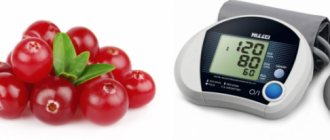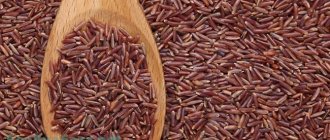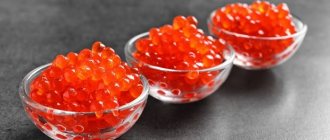Dried fruits for diabetes are a favorite dessert of many people. It is useful to include raisins in your daily menu for diabetes. Most people are interested in whether it is possible to eat dried apricots when diagnosed with diabetes? Dried apricots can have a diametrically opposite effect in type 2 diabetes.
Dried apricots can not only be beneficial for diabetics, but can also be harmful . Doctors still cannot definitively decide whether it is possible to eat dried apricots if you have diabetes. Experts' opinions were divided. Some of them believe that this product is a fairly high-calorie fruit. It contains natural sugars, which are undesirable for this disease. Another part of doctors claims that the concepts of dried apricots and diabetes are compatible. This opinion is explained by the fact that dried fruits contain many useful substances.
When consuming dried apricots for diabetes, it is worth taking into account the very large percentage of sugars (up to 85%) in it, but the glycemic index of the product is small, so whether or not you can consume this sweetness can only be determined by a doctor, depending on the severity of the pathological process.
General information
Dried apricots are dried apricots from which the pit has been previously removed.
The more correct name for fruits that have been cooked whole is kaisa, but the more commonly used term is "dried apricots." When dried, apricots shrink 5-7 times, but retain more than 90% of their nutrients.
Glycemic index and energy value
100 g of dried apricots contain 5.2 g of protein, 0.3 g of fat and 51 g of carbohydrates.
The nutritional value of the product is 230-240 kcal, and its glycemic index is 35-40 units, depending on the variety. Dark and sweet fruits contain more glucose and fructose than light ones. More than a third of the carbohydrates in dried apricots belong to the group of dietary fiber (fiber), which causes a feeling of fullness and stimulates intestinal function.
Beneficial features
Dried apricots have the following beneficial properties:
- help remove excess fluid and reduce swelling;
- reduce blood pressure;
- improve heart function, help with arrhythmia;
- prevent hypoglycemia, increase attention and concentration;
- promote recovery from infectious diseases, stimulate the immune system;
- normalize intestinal microflora, help remove toxins when there is excess protein in the diet;
- have a beneficial effect on vision;
- prevent the occurrence of anemia;
- improve skin condition and rheological properties of blood, accelerate wound healing.
Dried apricots lower blood pressure.
Composition and nutritional value of dried apricots
Dried fruit contains many different vitamins, minerals and other beneficial components. The composition of dried apricots includes:
- vitamins A, C, B5;
- microelements Fe (Iron), K (Potassium), Mg (Magnesium), Ca (Calcium) and others;
- beta-carotene, pectin, riboflavin, thiamine, pyridoxine, choline, phylloquinone, tocopherol, niacin;
- fiber, water;
- organic acids; ascorbic, pantothenic and folic acids;
- carbohydrates, proteins, fats.
The calorie content of dried apricots is significantly higher than the energy value of fresh apricots and is about 250 kcal versus 45 kcal per 100 g of product.
The glycemic index of dried apricots is 35.
Is it possible to eat dried apricots for type 1 and type 2 diabetes?
The use of dried apricots by diabetics varies depending on the type of disease. In type 1 diabetes, the pancreas does not produce enough insulin to digest incoming glucose. The dose of artificial insulin is calculated based on the amount of carbohydrate food, which is converted into bread units (XE). 1 XE corresponds to 10 g of carbohydrates (or 12 g including fiber).
20 g of dried apricots contain 1 XE. Since the total number of bread units is limited, dried fruits should be consumed with caution.
In type 2 diabetes, when tissue sensitivity to its own insulin decreases, it is necessary to follow a low-carbohydrate diet.
Patients can eat dried fruits with an average glycemic index (less than 40-45 units), but in limited quantities. On an empty stomach it is useful to drink infusions and unsweetened compotes with dried apricots. Confectionery products (dried fruits in chocolate, fruit and nut mixtures with honey, etc.) are excluded from the menu. If you follow diet No. 9 according to Pevzner, it is recommended to replace dried apricots with fresh apricots.
But if there are other dietary restrictions or during the cold season, dried fruits can diversify the diet.
Could it be like a medicine?
Dried apricots help saturate the diabetic's body with valuable minerals and vitamins, soluble plant fibers. It, like any other healthy food product, is suitable for the prevention of a number of diseases, but consumption already during illness will not give a pronounced effect. Using dried apricots you can:
- strengthen the immune system;
- cleanse the body of toxic metabolic products;
- improve kidney and liver function;
- restore intestinal function after a course of antibiotic therapy (thanks to inulin and pectin);
- slow down vision deterioration;
- replenish potassium losses when using diuretics;
- help increase hemoglobin in anemia.
How to properly eat dried apricots for diabetes
It is advisable to consume dried apricots in the first half of the day, when the pancreas works most actively. To reduce the glycemic index of a product, it must be combined with ingredients that slow down the absorption of sugars: cottage cheese, carrots, etc.
You need to eat dried apricots in the first half of the day.
Daily norm
The daily intake of dried apricots for a diabetic should not exceed 1-2 XE, or 20-30 g. The average weight of one fruit is 5-7 g, so 4-5 pieces are enough for a healthy snack.
Rules for eating dried fruits
To avoid unpleasant consequences, you should take into account the recommendations of your supervising doctor on including dried fruits in your diet:
- A diabetic must keep strict records of every product eaten that contains high concentrations of sugar.
- Proteins interfere with the absorption of glucose, so it is advisable to mix dried fruits with cottage cheese or natural yogurt and include them in meat dishes.
- If you are not obese, you can lower the glycemic index of dried fruits by mixing them with nuts saturated with vegetable oils.
- Dried fruits added to vegetable salads are of great benefit.
- It is unacceptable to supplement porridge and baked goods with dried fruits.
- Compote made from dried fruits and berries is not sweetened with sugar. But you can use stevia and other sugar substitutes that are safe for diabetes.
- When brewing tea, it is useful to add dried green apple peel, rich in potassium and iron.
- You should not eat dried fruits while taking a course of antibiotics, as they may enhance the effect of the medications.
- When purchasing a product, you must carefully read the ingredients on the package. It should not contain sugar syrup, sugar, or chemical additives. The only additive allowed for diabetes is the preservative E200.
Dried fruits are a rich source of substances necessary for diabetes. The main condition for safe nutrition is compliance with daily norms and recommendations of the supervising doctor.
Step-by-step recipes
Dietary dried fruits can be added as a natural sweetener to puddings, cookies, muesli and other dishes. Along with dried apricots, prunes, dried cranberries and apples are used in recipes.
Fruit muesli
Ingredients:
- oat or multigrain flakes - 100 g;
- sunflower seeds, nuts (almonds, cashews) - 20 g each;
- dried apricots - 20-30 g;
- dried cranberries - 15-20 g;
- edible coconut oil - 2 tbsp.
Fruit muesli served with milk.
How to make muesli:
- Melt coconut oil in a water bath and mix with cereal.
- Grind dried fruits, nuts and seeds to buttery crumbs, add to oatmeal.
- Spread the mixture onto parchment paper in a thin layer.
- Bake at +150°C for 20 minutes, stirring every 5 minutes.
The indicated amount of ingredients is designed for 3 servings of muesli. They should be served with milk or natural yogurt.
Curd zrazy
Ingredients:
- low-fat cottage cheese (2-5%) - 400 g;
- semolina and flour - 3-4 tbsp each;
- egg;
- fructose - 2-3 tbsp;
- dried apricots - 50-60 g;
- a pinch of salt, spices (vanillin, cinnamon) to taste;
- oil - for frying.
Dried apricots are added to curd zrazy.
How to cook:
- Pour a small amount of boiling water over the prepared dried apricots and leave for 10 minutes.
- Mix the remaining ingredients, leave the dough to stand so that the semolina absorbs the released whey.
- Cut dried apricots into small slices.
- Form a small cake of dough in the palm of your hand, put some chopped dried fruits inside and seal it like a pie. Repeat with all the zrazy, fry them on both sides over medium heat.
- Place the finished zrazy on a baking sheet lined with oiled paper. Bake for 8-10 minutes at a temperature of +170...+180°C.
Harm and contraindications
If consumed in excess, dried apricots can be harmful to health.
The danger is posed not only by the high carbohydrate content, but also by a large dose of potassium and fiber. Rapid elimination of fluid increases the load on the kidneys, and an imbalance of potassium and magnesium salts leads to insomnia and increased anxiety. The hypotensive effects of dried apricots are dangerous for people with low blood pressure and asthma. Large amounts of dietary fiber can cause stomach upset and diarrhea.
Contraindications to the use of dried apricots are:
- decompensated diabetes mellitus;
- obesity;
- stomach ulcer, gastroduodenitis;
- individual intolerance;
- age up to 1 year.
Obesity is a contraindication to eating dried apricots.
For diseases of the thyroid gland, gout and urolithiasis, this product should be eaten with caution.
When is it better to give up?
Sometimes it is better to avoid dried fruits altogether. For example, dried apricots should not be eaten if:
- digestive disorders,
- allergic reactions,
- hypertension,
- and bronchial asthma.
Prunes and dried apricots are not recommended to be included in the diet of a diabetic who is obese.
It is better not to include prunes in the menu if, in addition to diabetes, you have:
- kidney stone disease,
- individual intolerance, accompanied by allergic reactions.
- gout, since prunes have minor diuretic properties,
- hypertension.
Precautionary measures
When consuming dried apricots, you must consider the following recommendations:
- Before eating, dried fruits should be thoroughly washed and soaked for 1-2 hours to remove traces of sulfur dioxide, which is used as a fungicide and insecticide in storage.
- 30 minutes before a fruit snack, type 1 diabetics need to administer short-acting insulin. The required dose is 1.5-2 parts of the number of bread units.
- When combining fruits and nuts, you need to monitor your sugar levels, since fats increase the need for insulin to digest carbohydrates.
- If you have diabetes of any type, it is prohibited to spend fasting days on dried apricots.
- Dried fruits should be given to children and people with allergies with caution. Even small doses of chemical reagents can cause an immune reaction, so it is recommended to dry apricots yourself.
- If white plaque, dark spots, bugs, moths and mold appear, you must throw away the spoiled product and thoroughly warm the container.
- If the fruits have become softer, but have not yet deteriorated, you need to dry them in the oven at a temperature of +130...+150°C, heat the glass jar and put the dried fruits back.
Treatment of diabetes with dried apricots
Some patients are looking for an answer to the question: can dried fruits be used as a treatment tool for diabetes? No one has yet tried to carry out therapy with these fruits, and it is also unknown which dried fruits can be used for this purpose in diabetes.
The only healing property of apricot is to replenish the deficiency of nutrients, which helps strengthen the immune system.
By consuming dried apricots, raisins, and prunes for type 2 diabetes, a person can only help ensure that the body is saturated with useful substances and removes heavy metals and accumulated toxins.
These products are recommended by doctors for patients with diabetes in small quantities when they have concomitant pathologies:
- Infections requiring antibiotics;
- Inflammations that affect the kidneys or liver - it is dried apricots that help these organs quickly drain harmful impurities and toxic fluids;
- Decrease in visual acuity, often accompanying diabetes;
Criterias of choice
When choosing dried fruits, you need to pay attention to their color, shine and consistency.
Quality criteria for dried apricots:
- color - dark orange, dark brown, for the lightest varieties of apricots - pale yellow;
- peel - strongly wrinkled, without damage, dirt, dark spots, traces of mold and moisture;
- texture - dense, dried fruits do not stick together;
- gloss - matte (glossy skin of dried apricots indicates additional treatment with oil or chemicals).
The dried apricots should be dark orange in color.
It is best to buy dried fruits in special stores or markets where you can inspect the goods. Unopened packages may contain spoiled fruits.
To increase the attractiveness of dried apricots, they are treated with sugar syrup, oil and chemical dyes. You can recognize such a product by its bright orange or bright red color, as well as its intense shine.
To increase the marketable mass, unscrupulous sellers soak dried fruits and then dry the peels.
After this, the fruits look juicier and larger, but are less healthy and have a shorter shelf life.
If you need to buy a lot of dried apricots at once, it is recommended to take a test portion (up to 50 g) and immerse it in cold water for 5-10 minutes. The presence or absence of dye can be judged by the shade of the water.
Recommendations for the treatment of diabetes
Of course, curing the disease solely through the use of this product is impossible. At the same time, the use of dried apricots helps to significantly strengthen the immune system, because the body receives the required amount of useful substances and components, and also helps eliminate toxins and heavy metals. In the presence of the conditions that will be presented below, it is strongly recommended to use the product in the minimum ratio:
- inflammatory conditions that affect the liver and kidney area. This is true if you regularly use dried apricots, which will affect a more rapid outflow of liquid and various harmful impurities;
- infectious lesions, especially when using antibiotic components;
- worsening degree of visual function acuity. As is known, retinopathy and similar conditions often occur in the first and second types of the disease.
Eating plums for diabetes
However, it is necessary to take care not only of the previously presented recommendations, but also of how exactly the presented dried fruit should be selected so that it can be eaten without fear for quality.
Storage conditions
Dried apricots should be stored in a glass jar, paper bag, wooden box or fabric bag.
The fruits should not be exposed to moisture or direct sunlight. If you have a plastic container or freezer bag, you can place the dried fruit in the refrigerator or freezer compartment. The shelf life of dried apricots depends on the type of storage:
- in a room or kitchen - no more than a month;
- in a pantry, cellar and other dry, cool place - up to six months;
- in a refrigerator with a No Frost system - up to 10 months;
- in the freezer - 1-1.5 years.
It is not recommended to refreeze the product, so it is stored in small portions.
Daily norm
The amount of product consumed should not exceed the maximum dose. For dried apricots, it is optimal to eat up to 100 grams of natural dried apricots that meet the requirements. If you eat too many treats, you may develop not only disorders of the digestive system, but also an increase in sugar levels.
At the same time, it is better not to consume dried apricots in their pure form. It can be added to desserts, tea, salads. But it cannot be subjected to heat treatment. In this case, all beneficial substances become inactive. It is optimal to eat dried fruits with low-fat fermented milk products.
Healthy dessert – dried apricots with cottage cheese











